Geochemistry monitoring of CO2 storage at the CO2CRC Otway Project, Victoria: operational mode
Chris Boreham A , Jim Underschultz B , Linda Stalker B , Barry Freifeld C , Dirk Kirste C , Ulrike Schacht D , Ernie Perkins E , Jonathan Ennis-King F , Peter Dumesny G and Sandeep Sharma HA CO2CRC - Geoscience Australia GPO Box 378 Canberra ACT 2601
B CO2CRC - CSIRO Petroleum
C Simon Fraser University
D CO2CRC - Australian School of Petroleum
E Alberta Research Council - CO2CRC
F CSIRO Petroleum Resources
G AGR
H CO2CRC - Schlumberger Carbon Services
The APPEA Journal 49(2) 602-602 https://doi.org/10.1071/AJ08075
Published: 2009
Abstract
The CO2CRC Otway Project is an Australian-first, demonstration-scale CO2 geosequestration experiment. It incorporates a wide-ranging monitoring and verification operation, including the injection of chemical tracers and the geochemical characterisation of the subsurface fluids sampled from the Naylor—1 monitoring well multi-zone U-tube system. Following the successful collection of baseline gas and fluid samples, injection began in April 2008 and by September 2008 over 20,000 tonnes of the projected total of ∼100,000 tonnes of supercritical CO2 has been injected into the depleted Waarre C unit of the Naylor gas reservoir in the Otway Basin.
Critical operational issues revolved around the timing of the chemical tracer injection at the CRC—1 injection well and the on-going maintenance and modifications to the U-tube sampling assembly. The latter resulted from two things:a hazard and operability study (HAZOP), which specifically addressed the continued integrity of the U-tube assembly and the safe collection and disposal of pressurised gases and formation waters, and the need for an innovative solution to mitigate against hydrocarbon wax precipitaton inside the U-tubes that would have jeopardise retrieval of sub-surface samples. A solvent delivery and retrieval system involving Solvesso—100TM was deployed following a mini-HAZOP. Breakthrough was initially confirmed by tracer detection at Naylor—1 approximately four months after injection began, whereas changes in the inorganic geochemical signatures were observed a few weeks later.
This has validated the sub-surface monitoring strategy and resulted in refinements to fluid flow models and expanded our understanding of geochemical processes. Furthermore, supercritical CO2 injection has resulted in the lowering of the gas-water contact at Naylor—1 and the progressive gassing out of the deeper U-tubes. Weekly to fortnightly U-tube sampling will continue until supercritical CO2 is established at Naylor—1 following which the frequency of sampling will be reviewed for the rest of the injection period.
keywords: Otway Basin, carbon dioxide geosequestration, depleted natural gas reservoir, gas geochemistry, carbon isotopes, monitoring and verification, tracers
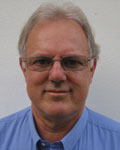
Chris Boreham is a principal research scientist at Geoscience Australia. He obtained his PhD in bio-inorganic chemistry from the Australian National University, Canberra.Shortly afterwards, Chris joined the Bureau of Mineral Resources—Geoscience Australia’s predecessor—as an organic geochemist. His research interests are in the application of biomarker, isotopic and kinetic tools in petroleum geochemistry and the biosphere—geosphere interface as it relates to the alteration of petroleum and CO2. Currently, he splits his time between projects related to the geological storage of CO2 and the Australian Government’s new energy initiative involved in understanding the petroleum potential in frontier areas of Australia. Chris.Boreham@ga.gov.au |
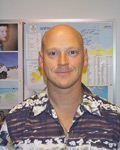
Jim completed his B.Sc. in Geology in 1986 at the University of Alberta. He worked as a petroleum hydrogeologist with the Basin Analysis Group at the Alberta Research Council from 1986 to 1994 during which time he completed a M.Sc. in Geodynamics at the University of Alberta. Since 1994 he has been president of PHI Hydrodynamics Ltd in Calgary and is currently Exploration and Appraisal Stream Leader at CSIRO Petroleum and Hydrodynamics and Geochemistry Discipline Leader in the CO2CRC in Australia. Jim has experience with flow systems analysis and integrated basin analysis in the Western Canada and Beaufort-Mackenzie sedimentary basins in Canada, the North Sea, the Llanos Basin in Colombia, the Murzuq Basin in Libya, and various Australian Basins. In recent years he has focused on petroleum hydrodynamics of faulted strata and the incorporation of hydrodynamics in seals analysis. He has applied many of these aspects to characterize storage capacity and containment security in the geological sequestration of CO2. Jim Received his PhD in membrane seal analysis from Curtin University in 2009. James.Underschultz@csiro.au |
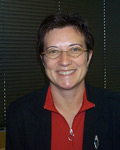
Linda Stalker obtained a BSc.(Hons) in Applied Geology ( University of Strathclyde, Scotland) in 1990. Her PhD on the interaction of water with sedimentary organic matter in the laboratory, specifically examining the generation of oxygenated species (including CO2), was gained at the University of Newcastle-upon-Tyne. In 1994 she joined the University of Oklahoma (USA) on a Department of Energy sponsored post-doctoral study into organosulphur compounds trapped in coals. Since 1996 she has worked in petroleum E&P at Statoil, in Norway. She joined CSIRO Petroleum in 2000 as leader in gas geochemistry specialising in analysis and interpretation of carbon and hydrogen isotopes of oil and gases for the petroleum and CBM sectors. She has become increasingly involved in the CO2CRC (The Cooperative Research Centre for Greenhouse Gas Technologies) and research in the geological storage of CO2 storage for the Energy Transformed Flagship in the area of monitoring and verification. Linda.Stalker@csiro.au |

Barry Freifeld is a Mechanical Engineer at Lawrence Berkeley National Laboratory. He obtained his PhD in Civil and Environmental Engineering from the University of California, Berkeley, USA. He has been a staff member at Lawrence Berkeley National Laboratory since 1992, where his research interests have ranged from flow and transport in the vadose zone, characterization of natural gas hydrates in suboceanic and subpermafrost settings, to his recent involvement in geologic carbon sequestration demonstration projects. As a field hydrologist, he works to incorporate emergent technologies, such as cone-beam x-ray CT and distributed temperature sensing, into everyday practice. dkirste@sfu.ca |

Dirk Kirste received his B.Sc. Honours from the University of British Columbia, his M.Sc. from the University of Waterloo and his Ph.D. from the University of Calgary in 2001. Since finishing his Ph.D. he has been with Geoscience Australia and the Australian National University and currently holds the position of Assistant Professor at Simon Fraser University in Vancouver. His specialization is in aqueous geochemistry and geochemical modeling. He has been a part of Geodisc and the CO2CRC since 2002. dkirste@sfu.ca |

Ulrike holds a BSc in Geoengineering Sciences, a MSc in Applied Geochemistry (both from the Technical University of Berlin) and a PhD in Marine Geochemistry from the University of Kiel, Germany. She worked as a researcher for the Leibniz Institute of Marine Sciences in Kiel and at the Leibniz Universitaet Hannover, Germany investigating the early diagenesis of marine sediments. In January 2007 she joined the CO2CRC at the ASP (University of Adelaide). Here her research focuses on natural analogue studies for geosequestration, as well as geochemical assurance monitoring for CO2 geosquestration sites. uschacht@asp.adelaide.edu.au |
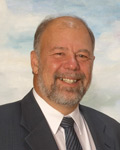
Ernie Perkins is a senior research scientist with the Carbon and Energy Management Department of the Alberta Research Council (ARC), Edmonton, Alberta, Canada. While on leave from ARC during the period of Sept/04 to Sept/06, Ernie was a senior research scientist with the Cooperative Research Centre for Greenhouse Gas Technologies (CO2CRC) in Canberra, Australia and worked on the Otway Basin Pilot Program (OBPP). During the last 20+ years, his principle areas of research have been the geochemical aspects of the subsurface storage of greenhouse gases and the monitoring/prediction of formation damage during enhanced oil recovery, particularly during steam based EOR. Ernie.Perkins@arc.ab.ca |

Jonathan Ennis-King has a BSc from the University of Melbourne, and a PhD in Applied Mathematics from Australian National University. He has held post-doctoral positions at the University of Melbourne, ANU and Lund University in Sweden, in the fields of colloid and polymer science. Since 1999 he has worked for CSIRO Petroleum, investigating the underground storage of carbon dioxide. Jonathan.Ennis-King@csiro.au |
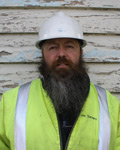
Peter Dumesny is an experienced operator in the mining industry and the oil and gas exploration industry. During 2007/2008 Peter worked as a contractor during construction and drilling of the CO2CRC -1 injection well. He is a local farmer who manages the family property at Nirranda South where the Naylor-1 and CRC-1 wells are located. From March 2008 he is employed by AGR-AP as administrator/operator of the CO2CRC Otway Project site where his main responsibility involves the day-to-day operation, reporting and maintenance of the Buttress-1 production plant. Peter.Dumesny@agr.com |
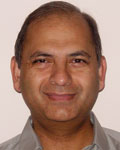
Mr Sharma is the Program Manager Pilot and Demonstration Program, with the Cooperative Research Centre for Greenhouse Gas Technologies (CO2CRC), Australia, managing the Otway Basin Pilot Geo-sequestration Program. He is on partial secondment to the CO2CRC from Schlumberger starting January 2005. In Schlumberger since 1981, he has worked across the globe and held a wide variety of senior positions in operations management, marketing and new product development. Mr Sharma has a Bachelors in Electrical Engineering (India), a Post Graduate Diploma in Business Management (UK), a Masters in Sustainability Management (Australia) and has been a Visiting Fellow of the Sloan School, MIT (USA). sharma2@slb.com |
References
Boreham, C.J., Chen, J. and Hong, Z., 2008—Baseline study on sub-surface petroleum occurrences at the CO2CRC, Otway Project, western Victoria. PESA Eastern Australasian Basins Symposium III, Sydney, 14–17 September, 2008, 489–99.Kirste, D., Perkins, E., Boreham, C., Freifeld, B., Stalker, L., Schacht, U. and Underschultz, J., 2009—Geochemical modelling and formation water monitoring at the CO2CRC Otway Project, Victoria, Australia. Submitted to the 24th International Applied Geochemistry Symposium, 1-4 June, 2009, Fredericton, N.B., Canada.
Leuning, R., Etheridge, D. M., Luhar, A. K., and Dunse, B. L. (2008). Atmospheric monitoring and verification technologies for CO2 geosequestration International Journal of Greenhouse Gas Control 2, 401–14.
Stalker, L., Boreham, C., Underschultz, J., Freifeld, B., Perkins, E. And Sharma, S., 2008—Geochemical monitoring at the CO2CRC Otway Project: tracer injection and reservoir fluid acquisition. GHGT–9, Washington D.C. November, 2009. Accessed at: https://www4.eventsinteractive.com/iea/viewpdf.esp?.
Underschultz, J., Freifeld, B., Boreham, C., Stalker, L., Schacht, U. Perkins, E. Kirste, D. and Sharma, S., 2008—Geochemistry Monitoring of CO2 storage at the CO2CRC Otway Project, Victoria. APPEA Journal, 48 (DVD). Extended Abstract.


